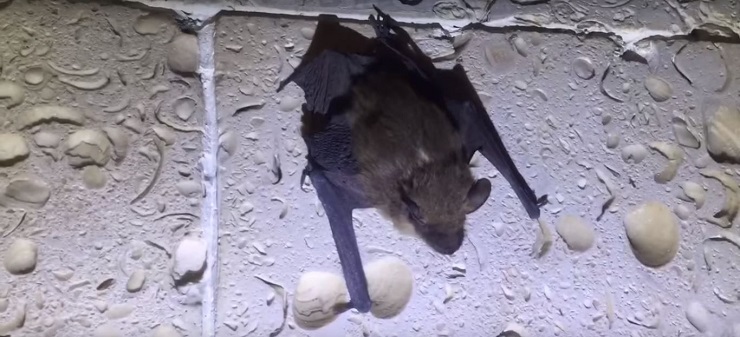
| Home | Marion | Hamilton | Squirrel | Raccoon | Bird | Bat | Opossum | Skunk | Rat/Mice | Snake |
Bat Calendar
Bats are seasonally aligned animals and have a set of activities they undertake in every season.
This however doesn’t make them unique as many other Indianapolis animals undergo the same routine in certain
parts of the world. The bats’ life-cycle in Africa is very different to that in America since
America has distinct seasons. The activities are based on feeding, hibernation and breeding.
There are some periods when the male and female bats segregate to give the other set room for
maternity.

Spring time: maternity season
Maternity colonies consisting of mothers with pups are common in this period. This period runs from the 3rd week in May through late July. Most early litters begin flying in mid-July, while late pups start flying towards the end of July.Throughout this time, the males roost in a separate location than the maternity colony. Each female bears only a single pup that they devotedly raise to maturity. The Indianapolis pups are carried by their mothers for about 4-5 weeks. At this time, the bond between mother and pup is very strong that it can continually call its pup for a week when it gets lost.
Summer activities
In August, the juvenile Indiana bats can be seen flying around the roost. It is the period you can remove the bats from your home as the young can fly and there is an ample supply of food. Both the female and male, plus the juvenile are still in separate groups. During this summer period.
What happens during the fall?
In mid Septembers, when fall approaches, all the bats regroup and start feeding excessively so that they gain fat reserves to push them through the winter season. They then start migrating towards their wintering locations, usually:
- secluded buildings
- cages
- Underground caves.
It is also the time you can remove Indianapolis bats from your house without any special permit. Late in November, they begin their torpor session, but before these, all they do is eat as their bodies are signalling them to fatten. At this time, they have amassed lots of fat and are ready to sleep.
Winter season
Bats must hibernate to survive the cold winter season. They can however be spotted in warmer nights foraging around for food. At this time, there are no insects to support their active metabolism so they have to stay put. The specific temperature for hibernation should be between 35-40 degrees Fahrenheit. Some Indianapolis bats prefer the caves and underground cages as they offer a constant cold temperature, less disturbances and security. Others can hibernate in attic roosts and their state of inactivity is characterised by slower breathing, lower body temperature and a low metabolic rate. In February when their fat is almost depleted, they can leave the roosts to find food.
Go back to the Indianapolis Wildlife Removal home page.


Spring time: maternity season
Maternity colonies consisting of mothers with pups are common in this period. This period runs from the 3rd week in May through late July. Most early litters begin flying in mid-July, while late pups start flying towards the end of July.Throughout this time, the males roost in a separate location than the maternity colony. Each female bears only a single pup that they devotedly raise to maturity. The Indianapolis pups are carried by their mothers for about 4-5 weeks. At this time, the bond between mother and pup is very strong that it can continually call its pup for a week when it gets lost.
Summer activities
In August, the juvenile Indiana bats can be seen flying around the roost. It is the period you can remove the bats from your home as the young can fly and there is an ample supply of food. Both the female and male, plus the juvenile are still in separate groups. During this summer period.
What happens during the fall?
In mid Septembers, when fall approaches, all the bats regroup and start feeding excessively so that they gain fat reserves to push them through the winter season. They then start migrating towards their wintering locations, usually:
- secluded buildings
- cages
- Underground caves.
It is also the time you can remove Indianapolis bats from your house without any special permit. Late in November, they begin their torpor session, but before these, all they do is eat as their bodies are signalling them to fatten. At this time, they have amassed lots of fat and are ready to sleep.
Winter season
Bats must hibernate to survive the cold winter season. They can however be spotted in warmer nights foraging around for food. At this time, there are no insects to support their active metabolism so they have to stay put. The specific temperature for hibernation should be between 35-40 degrees Fahrenheit. Some Indianapolis bats prefer the caves and underground cages as they offer a constant cold temperature, less disturbances and security. Others can hibernate in attic roosts and their state of inactivity is characterised by slower breathing, lower body temperature and a low metabolic rate. In February when their fat is almost depleted, they can leave the roosts to find food.
Go back to the Indianapolis Wildlife Removal home page.
